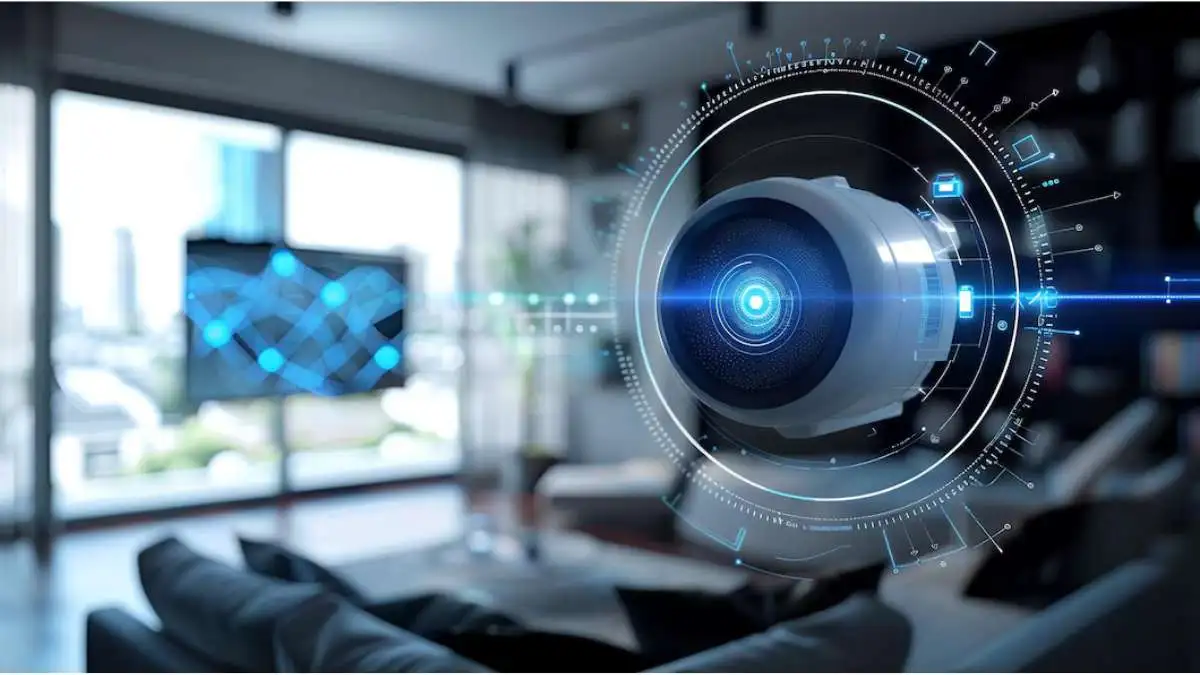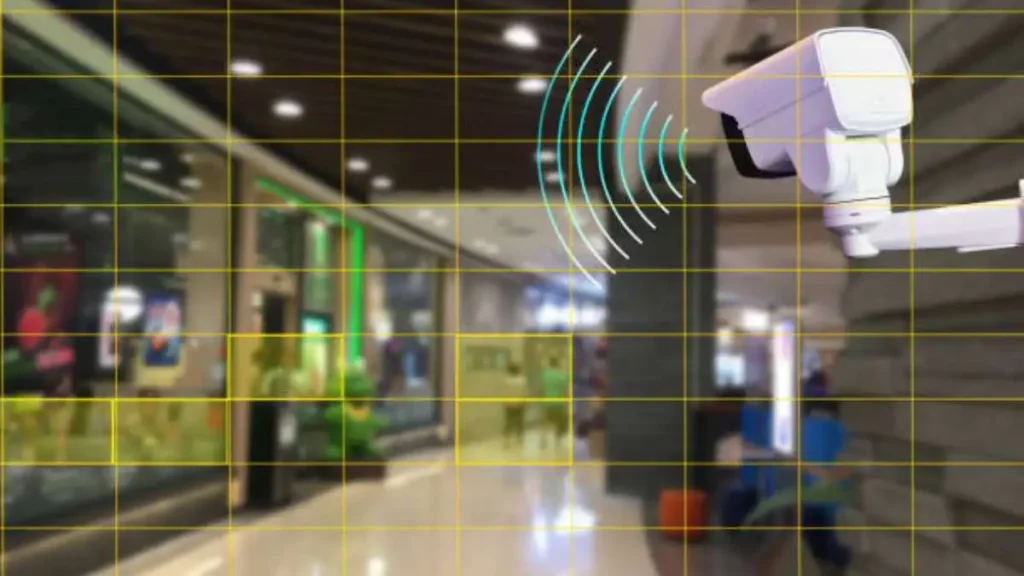Tech
The Power of Surveillance: Leveraging Security Cameras for Enhanced Business Intelligence

Introduction: Security Cameras Beyond Surveillance
Security cameras have traditionally been seen as tools for surveillance—watchful eyes that monitor and record activity to deter crime and enhance security. However, as technology evolves, the role of security cameras is expanding far beyond their original purpose. In today’s data-driven world, security cameras are emerging as powerful tools for business intelligence, providing valuable insights that can drive efficiency, improve customer experience, and optimize operations.
This article explores how businesses can leverage modern security cameras to gain more than just security. By tapping into the data these cameras provide, companies can transform surveillance into actionable intelligence that supports better decision-making and drives business success.
Table of Contents
1. The Evolution of Security Cameras: From Analog to Smart Devices
The journey of security cameras from simple, analog devices to complex, smart systems has been transformative. Modern security cameras are equipped with high-definition lenses, artificial intelligence (AI), and advanced analytics capabilities that make them much more than passive recorders of video footage.
- High-Definition and 4K CamerasThe shift from grainy, low-resolution footage to high-definition (HD) and 4K cameras has revolutionized the clarity and detail captured by security systems. This enhancement allows for better identification of people, objects, and activities, which is critical not just for security but also for analyzing customer behavior, employee efficiency, and operational processes.
- Improved Clarity: HD and 4K cameras provide detailed images that can be zoomed in without losing quality, making it easier to analyze specific incidents or activities. This is particularly useful in retail environments where understanding customer movement and behavior can inform store layout decisions.
- Enhanced Coverage: With wider fields of view and the ability to cover large areas in high detail, these cameras reduce the need for multiple units, simplifying surveillance setups while providing comprehensive coverage.
- AI and Machine Learning IntegrationArtificial intelligence and machine learning have added a layer of intelligence to security cameras, allowing them to do more than just capture video. These technologies enable cameras to analyze video in real-time, identifying patterns, detecting anomalies, and even predicting potential security threats.
- Real-Time Analytics: AI-powered cameras can analyze video footage in real-time to identify specific activities, such as counting the number of people entering a store, tracking the flow of traffic, or detecting suspicious behavior. This information can be used to make immediate decisions, such as reallocating staff or adjusting store layouts.
- Automated Alerts: Machine learning algorithms enable cameras to learn from past data, improving their ability to detect unusual activities over time. For example, if a camera detects that an employee is accessing a restricted area at an unusual time, it can automatically alert security personnel, allowing for quick intervention.
2. Leveraging Security Cameras for Business Intelligence
Security cameras have the potential to be much more than just tools for preventing theft and monitoring activity. When used strategically, they can provide businesses with critical insights that drive operational improvements, enhance customer experiences, and inform strategic decision-making.
- Enhancing Customer ExperienceIn retail and customer-facing environments, understanding customer behavior is key to enhancing the shopping experience and increasing sales. Security cameras can provide valuable data on how customers interact with products, navigate stores, and make purchasing decisions.
- Heat Mapping and Traffic Analysis: By analyzing video footage, businesses can create heat maps that show which areas of the store receive the most foot traffic. This information can be used to optimize store layouts, place high-margin products in high-traffic areas, and improve overall flow within the store.
- Queue Management: Cameras can monitor checkout lines in real-time, alerting managers when queues become too long. This allows businesses to open additional registers or deploy staff to prevent customer frustration and reduce wait times.
- Optimizing Operational EfficiencyBeyond customer interaction, security cameras can also be used to monitor and improve operational efficiency. From manufacturing floors to warehouses, cameras provide a way to ensure processes are running smoothly and identify areas for improvement.
- Process Monitoring: In manufacturing environments, cameras can be used to monitor production lines, ensuring that processes are being followed correctly and identifying bottlenecks that could be slowing down production. This information can lead to adjustments that improve efficiency and reduce downtime.
- Inventory Management: In warehouses, cameras can track inventory movement, helping to prevent shrinkage and ensuring that products are stored and retrieved efficiently. By integrating with inventory management systems, this data can be used to optimize stock levels and reduce waste.
- Ensuring Compliance and SafetySecurity cameras are also essential tools for ensuring that safety protocols are followed and that businesses remain compliant with regulations. In environments where safety is a priority, cameras provide a way to monitor adherence to safety standards and identify potential hazards before they result in accidents.
- Monitoring Safety Protocols: Cameras can be used to ensure that employees are following safety protocols, such as wearing protective gear or adhering to social distancing guidelines. If a violation is detected, the system can alert management, allowing for immediate corrective action.
- Regulatory Compliance: In industries with strict regulatory requirements, such as food production or pharmaceuticals, cameras provide a way to document compliance with health and safety standards. This footage can be used in audits or inspections to demonstrate adherence to regulations.

3. Integrating Security Cameras with Other Business Systems
To maximize the value of security cameras as tools for business intelligence, they must be integrated with other business systems. This integration allows for the seamless flow of data between cameras and the software platforms that businesses use to manage operations, analyze data, and make decisions.
- Integration with Point of Sale (POS) SystemsIn retail environments, integrating security cameras with POS systems provides a powerful tool for analyzing sales data in the context of customer behavior. For example, businesses can correlate video footage with sales transactions to understand how promotional displays influence purchasing decisions.
- Transaction Monitoring: Cameras can be set to monitor POS terminals, capturing footage of every transaction. This helps in identifying discrepancies, such as employee theft or customer fraud, and provides video evidence that can be used in investigations.
- Customer Behavior Analysis: By linking camera footage with sales data, businesses can analyze customer behavior before, during, and after a purchase. This information can be used to refine marketing strategies, improve product placement, and enhance overall sales performance.
- Integration with Building Management SystemsFor businesses that operate large facilities, integrating security cameras with building management systems (BMS) provides a comprehensive view of the environment. This integration allows businesses to monitor and control various aspects of the facility, such as lighting, HVAC, and access control, from a single platform.
- Energy Management: Cameras can monitor occupancy levels and adjust lighting and HVAC settings accordingly, helping to reduce energy consumption and lower operational costs. For example, if a camera detects that a room is empty, it can signal the BMS to turn off lights or reduce heating.
- Environmental Monitoring: In addition to security, cameras equipped with environmental sensors can monitor factors such as temperature, humidity, and air quality. This data can be used to maintain optimal conditions for both employees and equipment, ensuring a safe and productive work environment.
- Data Analytics and ReportingTo fully leverage the data captured by security cameras, businesses must invest in analytics tools that can process and analyze the footage. These tools can generate reports and dashboards that provide actionable insights, helping businesses make data-driven decisions.
- Video Analytics Software: Advanced video analytics software can process footage in real-time, identifying trends and patterns that would be difficult for humans to detect. This software can generate reports on everything from customer behavior to operational efficiency, providing valuable insights that inform decision-making.
- Custom Dashboards: By integrating camera data with business intelligence platforms, businesses can create custom dashboards that display key metrics in real-time. These dashboards provide a visual overview of operations, helping managers stay informed and respond quickly to changes.
Conclusion: Unlocking the Full Potential of Security Cameras
Security cameras have evolved far beyond their original purpose of monitoring and recording activity. Today, they are powerful tools for gathering and analyzing data, providing businesses with valuable insights that can drive efficiency, improve customer experiences, and enhance overall operations. By integrating cameras with other business systems and leveraging advanced analytics, companies can unlock the full potential of their surveillance infrastructure, transforming it into a strategic asset that supports long-term success.
Complex Security Solutions provides cutting-edge surveillance systems that not only enhance security but also offer valuable business intelligence insights. By integrating advanced security cameras from Complex Security Solutions, businesses can gain real-time data to make informed decisions and improve overall operational efficiency.
-

 GENERAL1 week ago
GENERAL1 week agoChristofle – For Those Who Dream of Family Heirloom Silver
-

 GENERAL2 months ago
GENERAL2 months agoUncovering the World of кинокрадко: The Dark Side of Film Piracy
-

 GENERAL4 weeks ago
GENERAL4 weeks agoUnveiling the Art of преводсч: How Translators Bridge Language Barriers
-

 SPORTS2 months ago
SPORTS2 months agoDiscover the World of Football with Streameast: Watch Your Favorite Leagues and Tournaments


























